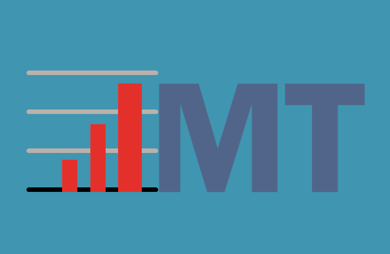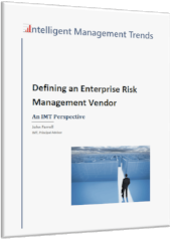There are two broad categories typically used to justify firing a decision maker. The first is when they egregiously neglect a basic component of a decision-making process. The second is having a string of poor outcomes. The latter usually traces back to the former. No one is fired for following a good management decision-making process.
Historical Thoughts on Business Decision Making
The science of management decision making is still young. The progression of decision making styles and concepts within the past century draws on theories from economists, behavioral psychologists, statisticians, business consultants, and seasoned managers.
- Chester Barnard first generalized the term “decision making” in a business context in his 1938 book on management theory, “The Functions of the Executive.”
- Business theorists, including Herbert Simon, James March, Henry Mintzberg, and Peter Drucker, developed the study of business decision making in the decades that followed.
- Simon identified issue complexity, time limits, and analytical capabilities as the main decision maker constraints that result in “satisficing” under bounded rationality conditions He believed rational decision making would increase with the ability to gather more information.
- Mintzburg countered deliberative decision processes, advocating instead for relationship-driven organizational structures that give rise to decisions based on individual experiences.
- Drucker highlighted the role of effective executives as setting the organizational objectives which drive the consideration and analysis of decision alternatives. After analyzing executive roles and studying Japanese business culture, Drucker noted the following in the January 1967 issue of the Harvard Business Review:
“Effective executives do not make a great many decisions. They concentrate on what is important. They try to make the few important decisions on the highest level of conceptual understanding. They try to find the constants in a situation, to think through what is strategic and generic rather than to 'solve problems.' They are, therefore, not overly impressed by speed in decision making; rather, they consider virtuosity in manipulating a great many variables a symptom of sloppy thinking.”
- On the value of intuition versus analytically-based decision making, many successful executives, like former GE CEO and business advisor, Jack Welch, strongly side with the benefits of acting on determined gut instincts.
- Today’s behavioral economists and psychologists, including Nobel prize-winners Daniel Kahneman and Richard Thaler, add considerations for a variety of individual, group, and information biases that can divert decision making from optimal choices.
In general, management theorists and pundits acknowledge good business decision making is a mixture of science and psychology. For those who support Herbert Simon’s view, current management trends are accelerating toward broader use of more-informed rational decision making. Vast data collection and better data management can foster more effective decision-making processes today compared to the past.
Given the burst of new data, further progress in management proficiency now relies on improving analytical capabilities. An APT/EIU survey of 174 senior managers and executives across world regions and industry sectors found less than one-quarter believed they required more data while 54% stated a better ability to analyze data would most improve their decision making.
in management proficiency now relies on improving analytical capabilities. An APT/EIU survey of 174 senior managers and executives across world regions and industry sectors found less than one-quarter believed they required more data while 54% stated a better ability to analyze data would most improve their decision making.
IMT analyzes the management trends, technology advances, and data developments that are increasingly supporting a condensed deliberative decision-making process for a broader range of enterprise decisions. In our view, the current developments in data acquisition and data analytics are enabling more efficient decision making that can be both informed and timely.
What is An Effective Decision-Making Process?
Our last post on decision management principles asserted good business decisions are objective-oriented, informed, selective, risk-optimized, accommodating, unbiased, actionable, animating, timely, and documented. The historical theorists and consultants referenced above offered organizational structures, roles, and processes to achieve decision results with these characteristics. Their diverging opinions are mostly rooted in the speed required for management decision making.
From IMT’s perspective, technology innovation that supports improvements to data accessibility and analytics are condensing business decision-making time requirements even for deliberative processes. The following good decision-making process steps reflect the general guidance of past thought leaders and adds details to use as criteria for assessing where consultants, software, and information providers can offer value to enterprise decision makers.
- State the Objective
Set the specific organizational objective and the context for decision making. Frame the issue with the organization’s overall strategic, operational, and financial considerations.
- Establish Time Requirements
Identify any decision timeframe limits due to competitive, resource, financing, partnership, and customer requirements. Determine the depth to which each decision process step may be pursued. Assess first-mover advantages which could allow corrective actions while still capturing market demand, presence, and mindshare ahead of competitors.
- Identify All Stakeholders
Consider all parties affected by the decision outcome and either directly or indirectly incorporate their needs and concerns. Stakeholders are internal and external parties that can include owners, managers, employees, creditors, regulators, suppliers, partners, customers, the community, and others.
- Develop Decision Alternatives
Outline multiple potential decisions to help achieve the organizational objective. This may include a set of standard options from past experiences, as well as new creative ideas.
- Analyze the Alternatives
Conduct analysis of the likelihood and consequences of risk factors that could affect achieving the organizational objective. Risk appetite and risk management processes take center stage in this step with consideration of the risks directly associated with the decision, as well as overall enterprise risks and risk tolerances, to determine optimal decision outcomes. This step involves balancing data analytics and intuition based on resource and time limitations.
- Gain Stakeholder Input
The management gurus differ on the practicality and importance of this step, but decision buy-in and outcomes will improve if stakeholders are given an opportunity to shape the decision. Obtain input from those who will enact the decision, as well as those who will risk and benefit from the decision.
- Check Biases
Important decisions rarely incorporate pure objective analytics (if there is such a thing). Assess the potential biases of all decision inputs, including, but not limited to, those resulting from information bias, group think, individual experiences, and desired outcomes. Consider information gaps and data confidence levels. Question all assumptions.
- Choose from the Alternatives
According to Merriam-Webster, the etymology of decide is the Latin word decidere – to cut off. Deliberation ends and the lesser choices are dropped to arrive at the optimal risk-informed decision. Note the potential for all alternatives falling short of achieving the objective. In this case, revisit either the objective in Step One or consider new alternatives in Step Four.
- Communicate and Enact the Decision
If the prior steps are followed, a willing and able set of participants should be ready to act on the decision. A documented decision should include directives that ensure necessary actions. Many decision failings stem from poor or incomplete communication. While the potential tedium of documentation can dissuade some decision makers from effectively completing this step, most software applications related to decision processes can now help document decisions and support communication to management, implementation teams, auditors, and regulators.
- Evaluate the Decision
All good processes include a feedback loop based on the evaluation of outcomes. Decision evaluation should serve two purposes. First, immediate analysis can guide any necessary corrective actions if unexpected or subpar outcomes result. Second, documented decisions and outcomes provide valuable evidence to help guide future decisions.
While not a one hundred percent guarantee, anyone who follows this business decision-making process will maximize their protection against being fired for their decisions and will be more likely to optimize business outcomes.
What Can Get You Fired Based on Decision Making?
What can get you fired? Some reasons will get you fired faster than others. The level of management or owner patience will also depend on the importance of the decision.
Some missteps that will send you packing (in order of a guard-escorted level of severity to a longer-term documented employee action) include:
- Ethical violations: This may occur in Steps 3, 6, and 8 if the decision maker ignores important stakeholders, considers personal interests over those of the stakeholders, or caters to a set of non-stakeholders. Expect a guard escort or worse.
- Ignoring or misinterpreting organizational objectives: Whether intentional or not, missing the point will quickly send you out the door.
- Slow decision implementation: Poor judgment in Step 2 and missing first-mover advantages will eventually show up in lost market share or lack of resources to carry out a decision. Never use time limitations to skip a step. Instead use the assessment in Step 2 to adjust the depth of practical action on each step with an appropriate analytics/intuition ratio.
- Evidence of a recurring personal bias: When you give too much weight to your own instincts in Steps 7 and 8, or you are not aware of your own decision biases, negative outcomes may eventually have fingers pointing at you.
- One poor outcome: You are usually safe in this situation if you follow the effective decision-making process steps. The exceptions are (1) the decision is so high profile that executives insist on a scapegoat, and (2) you substituted too much gut instinct for data-driven analysis. Sometimes instinct may rule, but, if the result is a poor outcome, a documented analytically-based process may still save you over using undocumented intuition. It will likely even save you through a handful of poor outcomes.
- A series of poor outcomes: What happens if a series of bad results occurs even if you follow all the steps of an effective decision-making process? This likely means there is an ongoing deficiency in at least one of the process steps, usually a lack of creativity in developing decision alternatives in Step 4 or relying on poor information in Step 5.
The other explanation for this last scenario is you are the victim of a Black Swan event of a series of poor outcomes that can occur even if you follow all the decision-making process steps with over ninety percent confidence. If you are fired in this circumstance, you can at least leave your position with a clear conscience and your integrity intact.







